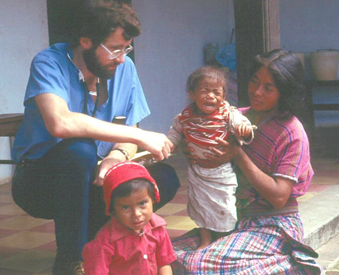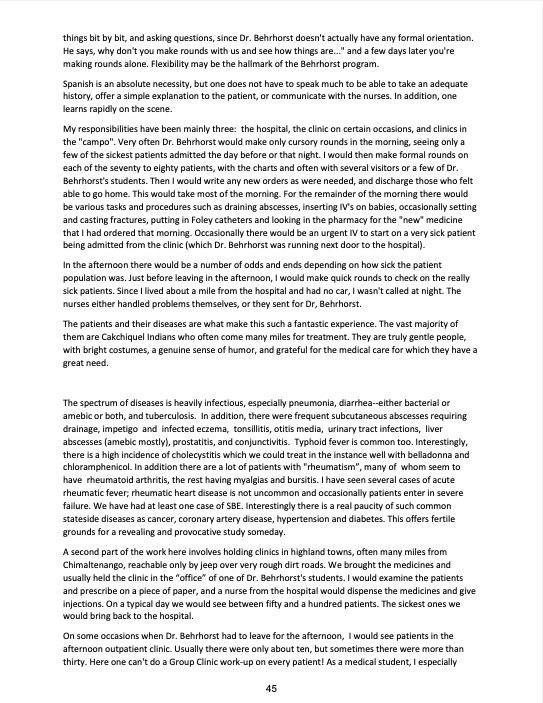
Behrhorst’s work blossoms in both curative and preventive care.
Dr. Behrhorst’s work became a focal point and springboard for other individuals and organizations committed to community health. Doc’s mantra was, “There’s lots to do.” Additional human resources, drawn to the work, were needed and welcome.
This was the era of Peace Corps (PC), and Jim Kukas and Wayne Haag go down in Behrhorst history as just two of the early PC Volunteers who worked with Doc developing the early version of the Health-Agricultural Promoter Program, incorporating farming improvements as essential to nutrition and health.
Medical students came to Chimaltenango first from Columbia University and subsequently from other medical schools (over 140 total from 1966 to 1985) to work in the Berhorst Clinic and Hospitalito, as part of their medical training.
The Clinic was primarily a setting for health care and community development work. But more than that, it was a setting for education of gringos and an incubator of ideas in health and community development — a place to pilot innovative programs, mostly on a shoestring budget, to help people improve their lives.



